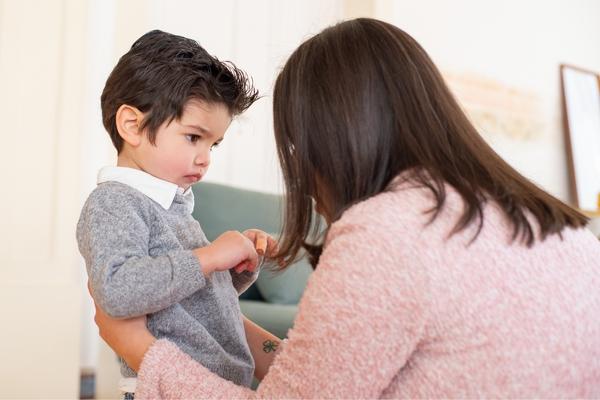
How to Explain Autism, ADHD & PDA to Family — Without the Holiday Meltdown
When Family Gatherings and Neurodivergence Collide
You may have landed here because you searched 'how to tell family about autism diagnosis', 'how to explain adhd to my family', or 'how to tell family about autism diagnosis'.
Holidays often carry big emotions — joy, nostalgia, overwhelm, tension, and even loss. For many neurodivergent families, these gatherings can highlight both love and misunderstanding.
Maybe you’ve tried explaining why your child avoids hugs, needs quiet space, or reacts strongly to last-minute changes. Or perhaps you’re an adult with Autism, ADHD, or Pathological Demand Avoidance (PDA) navigating traditions that feel overwhelming yourself.
Family interactions can become emotionally charged when neurodivergence is misread. Yet, these moments also offer a chance to educate, connect, and heal — one gentle conversation at a time.
What You’ll Learn About Explaining Neurodivergence to Family
How to explain Autism, ADHD, AuDHD, and PDA to family
How to lovingly support Autism, ADHD, and PDA
How to deal with pathological demand avoidance in adults, with love
How to tell family about an Autism diagnosis
Scroll down if you prefer to explore with me on YouTube!
Why It's Important to Help Grandparents & Family Understand Neurodiversity
I feel like this is an important starting point - your intention. Is it to advocate for your child? Yourself? Are you hoping there will be a flash of understanding with the education you share, and walls to come down? Is it to create a sense of ease around the dinner table?
Whatever your intention is, it's also important to be aware that other's have their own lens and sometimes it can take a while for "big news" or even something that feels controversial to settle in.
I feel it's also important to highlight that there are so many spectrums, so focusing on the one too two key pieces you would like to share, to ideally enhance mutual understanding is key. This will help reduce overwhelm for everyone... and then potentially negative reactions.
Personally, my intention is so family can appreciate why people may do certain things to create bridges of open, curious, and compassionate communication. "Why?" is a powerful place to start. So if you receive criticism and you feel like diving deeper, ask "why" and you may be surprised at the bridges you can build.
How to Explain Autism to Family
Explaining Autism to relatives begins with reframing understanding — from “something wrong” to “a different way of being.” Many family members may still see autism as a limitation, not a neurotype with its own strengths and patterns.
Try something simple and relatable:
“Autism means the brain processes information differently — especially sounds, textures, and emotions. Often Autistic individuals are very sensitive so can get overwhelmed easily.”
Help them see that Autism isn’t about lacking empathy or connection but about communicating and experiencing in unique ways. You might like to add specifics to reduce friction, like:
“They might not make eye contact or respond right away, but that doesn’t mean they’re not interested or not listening— it’s how their body manages input.”
You can also connect the explanation to the sensory overload of holidays — the smells, chatter, lights, or hugs. This helps relatives understand why your child or partner might need quiet breaks or alone time.
Another thought to help nourish the family nervous system: How can you model calm boundary-setting this holiday, showing your child that self-regulation and comfort matter more than “fitting in”?
How to Tell Family About an Autism Diagnosis
Sharing an Autism diagnosis can feel both liberating and nerve-wracking. You may hope family will finally understand — but fear they’ll judge or dismiss it.
When you’re ready, start with the “why” and “how” instead of only the label.
“We’ve learned that what we’re seeing has a name — Autism. It helps us understand how they experience the world, so we can support them better.”
Keep your tone steady and confident. If you’re comfortable with the diagnosis, others are more likely to meet you there and even be curious how they can be part of creating support.
You can also send a short article or video that explains Autism in modern, strengths-based language. Sometimes visuals bridge what words can’t.
Who in your family might receive this with empathy? Start there — you don’t need everyone’s approval to begin creating safety.

How to Explain ADHD to Family
ADHD takes many forms, from being misinterpreted as “not trying hard enough” to impulsive behaviour. Sharing ADHD is a brain-based difference in how attention, motivation, and energy are managed, which also often brings creativity, humour, and big-picture thinking.
You might say:
“ADHD means the brain struggles to filter what feels important at any given time. It’s not about carelessness — sometimes there’s just too much happening at once.”
During family events or holidays, relatives might notice restlessness, zoning out, or forgetting small details. Gently prepare them:
“They are very excited and not sure how to handle all of this, so we've talked about having some small breaks when it feels like a lot.”
By framing supports as regulation or emotional awareness tools rather than "misbehavior", you guide family members to see ADHD as a difference — not defiance.
When someone criticizes your child’s behaviour, how can you pause, breathe, and respond with calm facts instead of defensiveness? It can take a lot of energy to ensure the right amount of rest, right foods etc are all in place to keep things flowing!
How to Explain ADHD to My Family - Building Bridges
When you have ADHD, explaining it to family can stir old wounds — especially if your behavior has been misunderstood for years. You might begin simply:
“ADHD affects how I manage focus, planning, and emotions. It’s not an excuse — but it helps explain why I get overwhelmed or forget things.”
During gatherings, you might notice your brain jumping between conversations or needing breaks from noise. Instead of apologizing, try gentle advocacy:
“I’m just stepping away to recharge so I can come back and enjoy this more.”
If family members question or dismiss your needs, share educational resources instead of over-explaining. Education often softens resistance more effectively than debate.
How can you release the need to be “understood” by everyone — and trust that your self-acceptance is enough?

How to Explain PDA (Pathological Demand Avoidance) to Family
PDA, Pathological Demand Avoidance or Pervasive Drive for Autonomy, can be the hardest for others to understand — especially when it looks like defiance or manipulation.
Here’s a helpful way to describe it:
“PDA is a nervous system response to perceived pressure. Even a small request can feel unsafe or overwhelming, so the person resists — not out of choice, but protection.”
When relatives see your child refusing to join a group activity or melting down over something small, reframe it gently:
“They’re not trying to be difficult — their brain is signaling it's ‘too much’ right now.”
The more pressured someone with PDA feels, the stronger the resistance. Flexibility, humor, and choices help more than control or persuasion.
Could you plan ahead by offering choices instead of demands — letting your child co-create moments that feel safe and manageable?
How to Deal with Pathological Demand Avoidance in Adults
For adults, PDA often shows up in quieter, more complex ways — avoidance of plans, needing control, or feeling paralyzed by simple requests.
At family gatherings, this can be mistaken for indifference or stubbornness. But for someone with PDA, it’s rarely about people — it’s about pressure.
If you’re supporting an adult with PDA, or you recognize it in yourself, remember: it’s okay to pace, pause, plan, and even back-out of plans.
Some practical steps for the holidays:
Pre-plan flexibility: Choose which parts of the day are optional
Use humor: Light moments can ease the intensity of expectation
Communicate early: Share simple context — “I love you, I just need a bit of quiet before joining"
What would change if you viewed avoidance not as rejection, but as a sign of overwhelm — and treated it with compassion instead of frustration?
Connection Over Correction
Remember, everyone comes with their own lens. Ideally it's one that is open to learning and creating supportive environments, but unfortunately there are often more layers.
Sometimes it shows up as dismissive because of their relationship with the diagnosis or understanding of what it means. It can also take time to settle.
While it can be challenging, come back to your own intention. Is it to create bridges of understanding and safety that invite curiosity over correction?
Holidays rarely are perfect. I don't know about you, but for me the intention is for everyone to feels safe, respected, and seen.
Every calm explanation, every boundary honored, every compassionate pause teaches others that neurodivergent experiences are valid.
And in doing so, you give your family — and yourself — permission to build new traditions rooted in acceptance, not expectation.
Want to Learn More?
Go here to explore Heart Centred Parenting
Sign up to get science, promos & tools in your inbox!
If you have any questions, please feel free to reach out!
🌺 Katie
Please note that this information is intended for educational purposes only and should not be considered medical advice. Always consult with a healthcare professional for personalised guidance.
